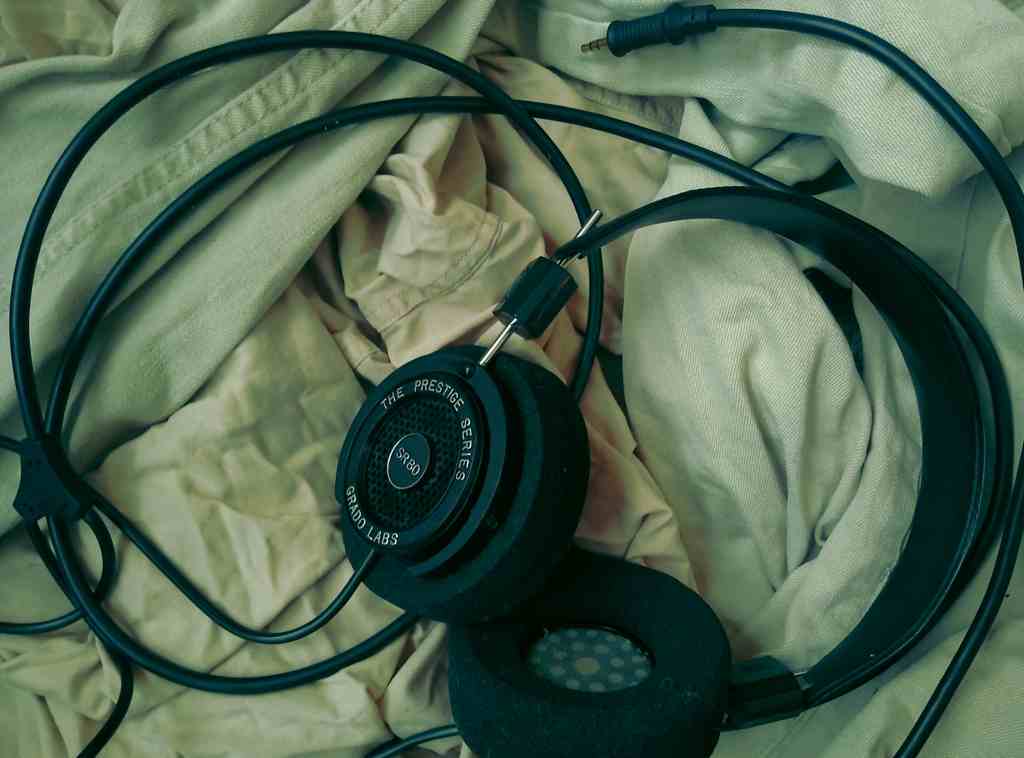Grado SR80 review

Throughwork
Grado have been around since the 1950’s, a mid‐length of time, make mostly record needles/cartridges and headphones. Grado models tend to be continuous, with variations. These are SR80’s, which have been about since 1991 and are now upgraded to SR80x.
Contents

Build
The SR80 is suitably built, but I qualify as cheap—a bunch of plastic moulds glued together. The cable is hefty and long, resists tangle, but is overweight for the headphones. Joins are plastic stamps. Wire is copper. Plugs are simple stamps with no attempt at strain reduction or mounting. Simple ear‐foams, a circle band on this model called L‐Cups (I think?). The earcups are an open design, meaning an outward facing grid. The headband is a patch of vinyl plastic. All in all, the setup works for adjustment and staying in place, with one annoyance that the cups can spin on the mountings, which are only metal rods. Clear left/right marks. The purpose‐cast moulds are robust for plastic, with no weak points. The simple headband and foams are only average for comfort, but well‐judged as effective‐at‐price. Aesthetic depends on opinion—I make them coherent and interesting, but the cheap retro design means I rate them only median.
Sound
Overall volume is good. Uneven in volume without purpose. On a larger scale, maybe bias towards lower highband. Volume disappears in lowband near a rather high 50 Hz. Good volume range. Timing is good for speed, and envelope well‐damped everywhere. Average precision. Good handling of swells—do not break up, mistime etc. Frequencies ok everywhere. There’s near‐no resonance, only a slight midband muddle. Given the roll‐off of lowband, should be poor overall frequency range, but lowband rolls off gently, some is present, so maybe average. Detail and color average, but note that what is there is clean and open. As expected, scale is average, and positions sometimes vague, but not messy.
SR80’s lack lowband, which could make them uninteresting for instrumental music and soundtracks, and they lack fine detail. However, and this is the caveat, their undistorted replay and speed work well—for example, if you listen to rock or other strings for performance and timing, you could like them.
Spec
| mic available? | no |
| cable noise | reasonable |
| accessories | |
| support |
Assess
SR80s were one of Grado’s first headphones, and are now the entry‐level. The build is all to purpose. The sound is undistorted, coherent and fast. Fair to say that soundtrack listeners and gamers will likely decide something is missing, but difficult to comment on other kinds of sound, as SR80’s stress unusual aspects—they’re different.
Note these Grados are the original model, now replaced. Grados as a range use open‐back cups, so lack lowband, and the cone design (of this older model) lacks modern detail. Reviews have for years stumbled between the fact that Grados on a frequency sweep measure badly, but address aspects of replay other designs fail. If you love lowband and/or value detail i.e ‘engineered’ sound, then avoid. Also, the open backs of SR80s are useless near other people or in noisy environments—they leak sound like a sieve—and the build is (deliberately) cheap but… the build is effective and they deliver a distortion‐free, fast sound you can listen to for years.
